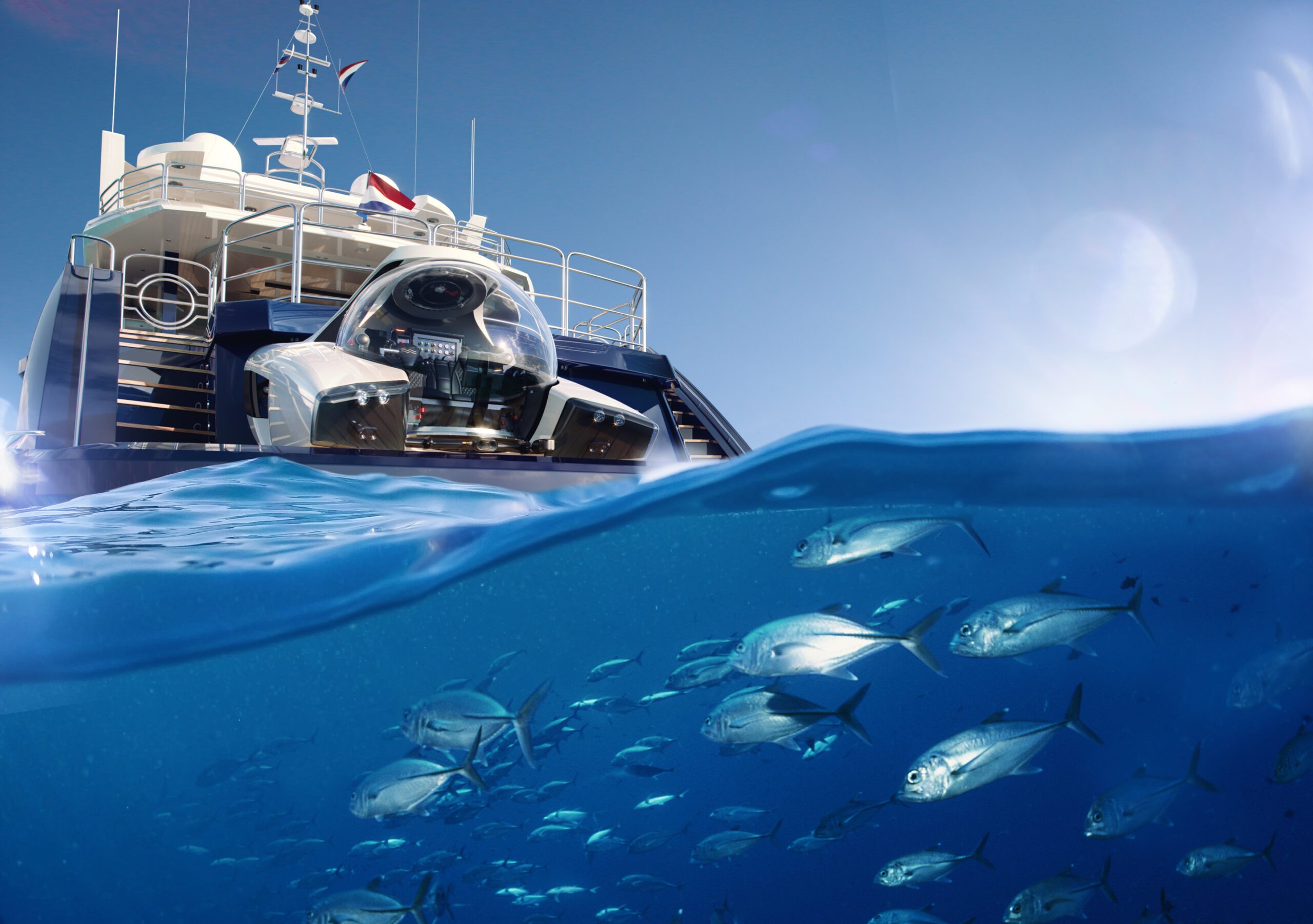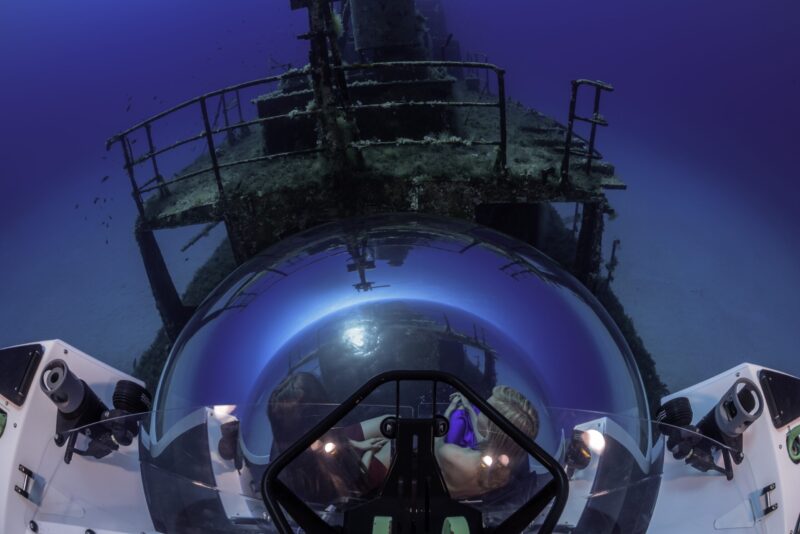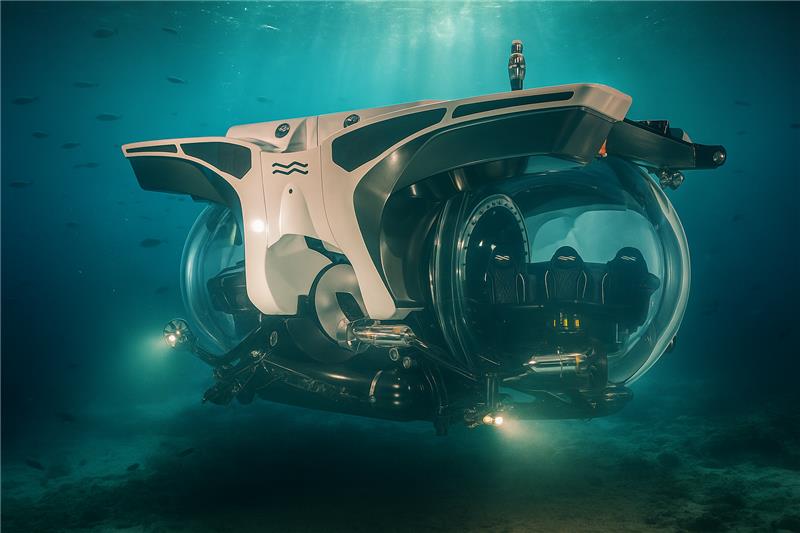Submarines and superyachts: How submersibles are changing the way we travel

Why underwater is becoming the new luxury frontier
Luxury travel has always pursued the rare and near unreachable: First the far-flung corners of the Earth, and more recently, the expanse of space.
Yet the true final frontier lies much closer to home.
The ocean, vast and silent, remains largely unexplored. The United States National Oceanographic and Atmospheric Administration (NOAA) reports that researchers have mapped less than 30 percent of the seafloor as of June 2025.
But beneath the waves, a little-known world is full of life, wrecks, and mysteries. Private submersible travel means these wonders are now accessible to more people—no longer the exclusive realm of the military or marine researchers.
While underwater exploration isn’t new, private submarines are—relatively. Once the preserve of explorers, navies, and scientists, superyacht submarines have fast become coveted accessories. Modern designs offer a combination of comfort, safety, and agility, allowing guests to glide effortlessly over coral reefs, explore historic wrecks, or watch marine life—some new to science—in their natural habitat.
“This is what a lot of submersible owners would like to see,” says Linda Peute, Sales Manager at U-Boat Worx, a leading submersible company. “They want to see new things.” That instinct—to venture further, to experience more, to discover—is reshaping what modern luxury means.
“Younger, more adventurous yacht owners are moving away from just owning a yacht as a status symbol,” explains Rory Delves, Sales Broker with Moravia Yachting. “They’re looking to capitalise and push the capabilities of explorer yachts to cruise the world’s most remove regions.”
And with explorer yachts increasing in size, larger toys—like subs—are being kept on board.
“Large industrial cranes allow for even the heaviest submersibles to be stored on board,” Rory continues. “These submersibles are the perfect blend of luxury and commercial capabilities. Many modern submersibles are capable of reaching depths below 1100 metres, depths once only possible in research and military operations. A top of the rage submersible, and often an accompanying ROV, are quickly becoming a standard addition to the modern explorer yacht’s arsenal.”

From distance to depth
These days, underwater travel is more land-bound than you’d think: A spate of luxury hotel openings across the Maldives, Australia, Singapore, China, Dubai, and Tanzania have entire suites below the surface.
It’s not just bound to the tropics (or the bedroom) either. Norway’s Michelin-starred underwater restaurant, Under, offers a sea-inspired tasting menu within its bunker-like dining room. Floor-to-ceiling windows offer views below the icy North Sea.
Now, travel isn’t just about distance, but depth.
Perhaps that’s why Linda’s customers aren’t just superyacht owners; hotels and resorts are also becoming a significant subset of her client-base.
“Increasingly, we’re seeing land-based clients showing interest in our subs,” Linda explains. “Private islands, for example, are looking to add submersibles so they can offer their guests more experiences.”
It’s a logical evolution. The pursuit of new perspectives has always driven luxury travel. But as the surface world grows smaller, depth has become a new measure of experience.

From watching to participating
And today, experience is no longer limited to simply observation: guests can become active participants, contributing to the discovery and preservation of the oceans themselves.
“I think ocean mapping should be standard,” Linda says. “You can check if the seafloor has been mapped, then record the data and send it to those who need it.”
A submersible like ARIEL, U-Boat Worx’s Cruise Sub 7, can dive to a depth of 1,140 metres—more than enough to shift NOAA’s 30 percent. Through a companion app, passengers can photograph fish as they appear, automatically identifying species and logging them for ongoing citizen-science efforts. In some cases, these observations may even hint at creatures new to science.
Private submarines have also proven their potential for exploration: It wasn’t long ago that the late Paul Allen, former owner of OCTOPUS, famously discovered the long-lost wreck of the Japanese ship Musashi, sunk during the Second World War.
“A yacht with a submarine like ARIEL is one thing, but NAUTILUS is a masterwork when it comes to design and innovation,” says Linda.
The world-first hybrid submarine-superyacht extends the possibilities still further, allowing longer expeditions beneath the surface and giving passengers a rare sense of continuity with a world few have ever seen first-hand.

Explorers, subs, and superyacht support
But the subs alone are only part of the story. This fascination with underwater exploration mirrors a broader appetite for off-the-grid, remote travel, a trend that is equally evident in the rising popularity of explorer yachts and well-equipped support vessels.
These support vessels act as mobile bases, carrying everything from extra fuel and provisions to crew and specialist equipment, allowing submersibles to operate further and longer. Take ORIGAMI, for instance—a purpose-built support yacht on the market today—which demonstrates just how far owner expectations have evolved.
Submersibles themselves are also becoming sleeker, faster, and more capable, with innovations in materials, battery life, and navigational tech extending both their reach and versatility. U-Boat Worx is building a luxury submarine capable of reaching up to nine knots, twice the average speed of submersibles on the market today.
Together, these developments are changing not only how the oceans are explored, but how yachting itself is imagined: As a seamless combination of surface luxury, underwater adventure, and high-tech ingenuity.
In short, modern luxury travel is no longer confined to the surface. With the right vessel, the right submersible, and the imagination to match, that final frontier is at last coming into focus for those with the vision to seek it.
For those who wish to explore beyond the waves, our team can guide you to the right vessel. Contact us to learn more.





 Previous news article
Previous news article